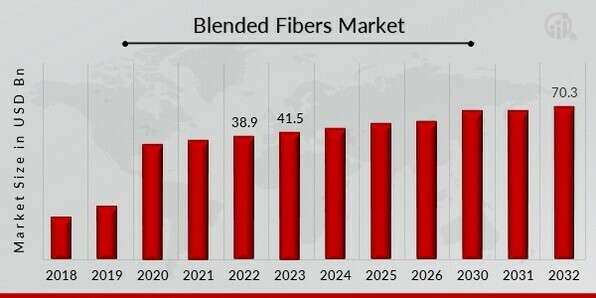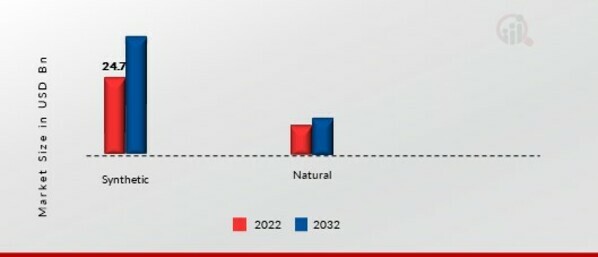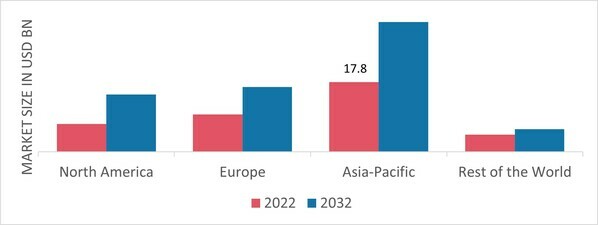Certified Global Research Member


Key Questions Answered
- Global Market Outlook
- In-depth analysis of global and regional trends
- Analyze and identify the major players in the market, their market share, key developments, etc.
- To understand the capability of the major players based on products offered, financials, and strategies.
- Identify disrupting products, companies, and trends.
- To identify opportunities in the market.
- Analyze the key challenges in the market.
- Analyze the regional penetration of players, products, and services in the market.
- Comparison of major players’ financial performance.
- Evaluate strategies adopted by major players.
- Recommendations
Why Choose Market Research Future?
- Vigorous research methodologies for specific market.
- Knowledge partners across the globe
- Large network of partner consultants.
- Ever-increasing/ Escalating data base with quarterly monitoring of various markets
- Trusted by fortune 500 companies/startups/ universities/organizations
- Large database of 5000+ markets reports.
- Effective and prompt pre- and post-sales support.
Global Blended Fibers Market Overview
Blended Fibers Market Size was valued at USD 38.9 Billion in 2022. The Blended Fibers industry is projected to grow from USD 41.5 Billion in 2023 to USD 70.3 Billion by 2032, exhibiting a compound annual growth rate (CAGR) of 6.80% during the forecast period (2023 - 2032). Growing demand for technical textiles, as well as increased awareness of sustainable and eco-friendly fabrics are the key market drivers enhancing the market growth.

Source: Secondary Research, Primary Research, MRFR Database and Analyst Review
Blended Fibers Market Trends
-
Growing demand for sustainable textiles drives market growth.
Market CAGR for blended fibers is being driven by the desire for sustainable textiles. As customers become more aware of the environmental impact of the textile industry, there is an increasing demand for textiles created from sustainable materials and processes. Blended fibres, which are created by blending two or more distinct types of fibres, provide a more sustainable alternative to traditional textiles. Blended fibres can be manufactured from a range of sustainable resources, including recycled polyester, organic cotton, and bamboo. These materials are frequently more environmentally friendly than traditional materials since they need less water and energy to produce and generate less waste. Furthermore, many blended fibres are biodegradable, which means they may be broken down naturally without harming the environment.
The increased demand for sustainable textiles is driving innovation in the blended fibres market, as producers work to develop more environmentally friendly materials and processes. This opens up new potential for companies that specialize in blended fibres, as well as textile manufacturers and merchants looking to address the growing demand for sustainable products.
Overall, the growing demand for sustainable textiles is likely to drive the growth of the blended fibres market in the coming years, as consumers and businesses alike seek out more ecologically friendly alternatives to traditional textiles.
Moreover, Blended fibres are rapidly being used in the automotive industry, which is fueling the expansion of the blended fibres market. Blended fibres have a number of advantages for automotive applications, including better durability, reduced weight, and increased fuel efficiency. Blended fibres are utilized in a range of automobile applications, such as seat coverings, headliners, and door panels. They are also utilized to build composite ma The capacity of blended fibres to minimize weight is one of its primary advantages in the automotive sector. This is especially crucial for electric vehicles, which must use lightweight materials to improve range. Blended fibres can also enhance fuel efficiency by lowering vehicle weight and enhancing aerodynamics. In addition to weight savings, blended fibres provide increased durability and resistance to wear and tear. This is critical for automotive applications, which require materials that can resist regular wear and tear. erials that can be used to make vehicle parts like dashboards and instrument panels.
Blended Fibers Market Segment Insights
Blended Fibers Source Insights
The Blended Fibers Market segmentation, based on Source includes Synthetic and Natural. The synthetic segment of the blended fibers market has the biggest market share due to its durability, adaptability, and affordability. Synthetic fibres are created from chemical compounds such as polyester, nylon, and acrylic and are noted for their strength, resistance to wear and tear, and simplicity of care. Synthetic fibres are frequently combined with natural fibres in the blended fibres market to create garments that combine the benefits of both materials.
Figure1: Blended Fibers Market, by Source, 2022 & 2032 (USD Billion)

Source: Secondary Research, Primary Research, MRFR Database and Analyst Review
Blended Fibers Product Insights
The Blended Fibers Market segmentation, based on Product, includes Cotton/Polyester, Cotton/Polyester/Cellulose, Nylon/Wool, Elastane/Nylon/Cotton. The cotton/polyester/cellulose category is the market's fastest growing section. This category includes fabrics made from cotton, polyester, and cellulose fibres. Cellulose fibres are a form of natural fibre derived from plants, such as bamboo or eucalyptus. This market is expanding significantly due to the numerous advantages of these fibres, such as their softness, breathability, and moisture-wicking qualities. Cotton is a popular natural fibre that is known for its softness and breathability, whereas polyester is a synthetic fiber that is known for its durability and wrinkle resistance.
Blended Fibers Application Insights
The Blended Fibers Market segmentation, based on application, includes Apparel, Home Furnishing, Technical. The home furnishing category dominates the blended fibres market due to the high demand for blended fibre fabrics in the home furnishing industry. Home furnishings are textiles that are utilized in the home, such as curtains, upholstery, bed linens, and towels. Blended fibre textiles are popular in the home furnishings business because they provide a variety of features such as durability, softness, and ease of care.
Blended Fibers Regional Insights
By region, the study provides market insights into North America, Europe, Asia-Pacific, and Rest of the World. The Asia Pacific Blended Fibers Market area will dominate this market, because of the expansion of manufacturing capacity and the availability of inexpensive labour in India and China. Favourable trade regulations and increased penetration of the organized retail sector are the primary factors drawing foreign investors to the region. Moreover, China’s Blended Fibers Market held the largest market share, and the Indian Blended Fibers Market was the fastest growing market in the Asia-Pacific region.
Further, the major countries studied in the market report are The US, Canada, German, France, the UK, Italy, Spain, China, Japan, India, Australia, South Korea, and Brazil.
Figure2: BLENDED FIBERS MARKET SHARE BY REGION 2022 (USD Billion)

Source: Secondary Research, Primary Research, MRFR Database and Analyst Review
Europe Blended Fibers Market accounts for the second-largest market share Because of the growing environmental consciousness among consumers, natural fibres derived from animals and plants are frequently employed in the apparel business. Further, the German Blended Fibers Market held the largest market share, and the UK Blended Fibers Market was the fastest growing market in the European region
The North American Blended Fibers Market is expected to grow at the fastest CAGR from 2023 to 2032. This is due to expanding awareness of a healthy lifestyle and nutrition and rising per capita disposable income.
Blended Fibers Key Market Players & Competitive Insights
Leading market players are investing heavily in research and development in order to expand their product lines, which will help the Blended Fibers Market, grow even more. Market participants are also undertaking a variety of strategic activities to expand their footprint, with important market developments including new product launches, contractual agreements, mergers and acquisitions, higher investments, and collaboration with other organizations. To expand and survive in a more competitive and rising market climate, Blended Fibers industry must offer cost-effective items.
Manufacturing locally to minimize operational costs is one of the key business tactics used by manufacturers in the Blended Fibers industry to benefit clients and increase the market sector. In recent years, the Blended Fibers industry has offered some of the most significant advantages to medicine. Major players in the Blended Fibers Market, including Reliance Industries (India), Welspun India Ltd. (India), Sutlej Textiles & Industries (India), Hebei Diamond Cashmere Products (China) and others, are attempting to increase market demand by investing in research and development operations.
The North Face is an American manufacturer of outdoor recreation products. The North Face manufactures outdoor apparel, footwear, and equipment. The company's logo is inspired by Half Dome, a prominent rock feature rising over 8,700 feet above sea level in Yosemite National Park, which was founded in 1966 to serve climbers. By the late 1990s, the label had extended beyond outdoor enthusiasts by focusing on street couture, and it has been recognized as a streetwear style emblem label since the 2000s. VF Corporation purchased it in 2000. In 2020, The North Face, a well-known outdoor clothing manufacturer, has announced the creation of new mixed fibre goods produced from recycled materials. The company's new Futurelight fabric is constructed of recycled polyester and elastane fibres and is utilized in jackets and other outdoor wear. The Futurelight cloth improves breathability and waterproofing while also lowering the company's environmental effect.
Toray Industries, Inc. is a Japanese multinational firm that specializes in industrial goods based on organic synthetic chemistry, polymer chemistry, and biochemistry technologies. Fibres and textiles, as well as plastics and chemicals, were its founding business sectors. The company has also expanded into medicines, biotechnology and research and development, medical products, reverse osmosis large membranes, electronics, IT-products, housing and engineering, and sophisticated composite materials. In 2019, Toray Industries, a Japanese chemical and textile firm, has launched a new line of blended fibre materials for automotive and industrial uses. The new materials from the company, which comprise nylon and polyester fibre blends, are intended to provide better durability and heat resistance, making them perfect for use in automobile parts and other industrial applications. Toray Industries expects the new goods to help it grow its presence in the worldwide blended fibres industry.
Key Companies in the Blended Fibers market include
- Reliance Industries (India)
- Welspun India Ltd. (India)
- Sutlej Textiles & Industries (India)
- Hebei Diamond Cashmere Products (China)
-
Pennine Textiles and Recycling (UK) - James Robinson fibers Ltd. (UK)
- National Spinning (US)
-
Natural Fiber Company (UK) - KantiFashion (India)
- Textile school (India)
Blended Fibers Industry Developments
In July 2021, Lenzing AG and Hyosung Corporation have formed a collaboration to develop sustainable textiles. Lenzing AG, a major developer of sustainable fibres, has announced a collaboration with Hyosung Corporation, a South Korean textile manufacturer, to develop sustainable textiles composed of blended fibres. The collaboration seeks to develop new environmentally friendly and sustainable textile products combining Lenzing's Tencel Lyocell fibres and Hyosung's creora spandex fibres.
In December 2020, Unifi, Inc. launches new blended fibre products. Unifi, Inc., a prominent manufacturer of recycled and synthetic fibres, will introduce a new line of blended fibre products under the Repreve name. The new materials, which comprise recycled polyester and nylon fibre mixes, are intended to increase performance and sustainability in a variety of textile applications, such as garments, home textiles, and automotive.
In September 2019, Teijin Limited expands blended fibre production, announced plans to expand its production of blended fibres for use in automotive and industrial applications. The company's new Thailand production facility will produce a number of blended fibres, including polyester and nylon mixes, which are utilized in a variety of automotive and industrial applications, such as airbags and seat belts.
Blended Fibers Market Segmentation
Blended Fibers Market By Source Outlook
- Synthetic
- Natural
Blended Fibers Market By Product Outlook
- Cotton/Polyester
- Cotton/Polyester/Cellulose
- Nylon/Wool
- Elastane/Nylon/Cotton
Blended Fibers Market By Application Outlook
- Apparel
- Home Furnishing
- Technical
Blended Fibers Regional Outlook
- North America
- US
- Canada
- Europe
- Germany
- France
- UK
- Italy
- Spain
- Rest of Europe
- Asia-Pacific
- China
- Japan
- India
- Australia
- South Korea
- Australia
- Rest of Asia-Pacific
- Rest of the World
- Middle East
- Africa
- Latin America
Leading companies partner with us for data-driven Insights
Kindly complete the form below to receive a free sample of this Report
Tailored for You
- Dedicated Research on any specifics segment or region.
- Focused Research on specific players in the market.
- Custom Report based only on your requirements.
- Flexibility to add or subtract any chapter in the study.
- Historic data from 2014 and forecasts outlook till 2040.
- Flexibility of providing data/insights in formats (PDF, PPT, Excel).
- Provide cross segmentation in applicable scenario/markets.





















